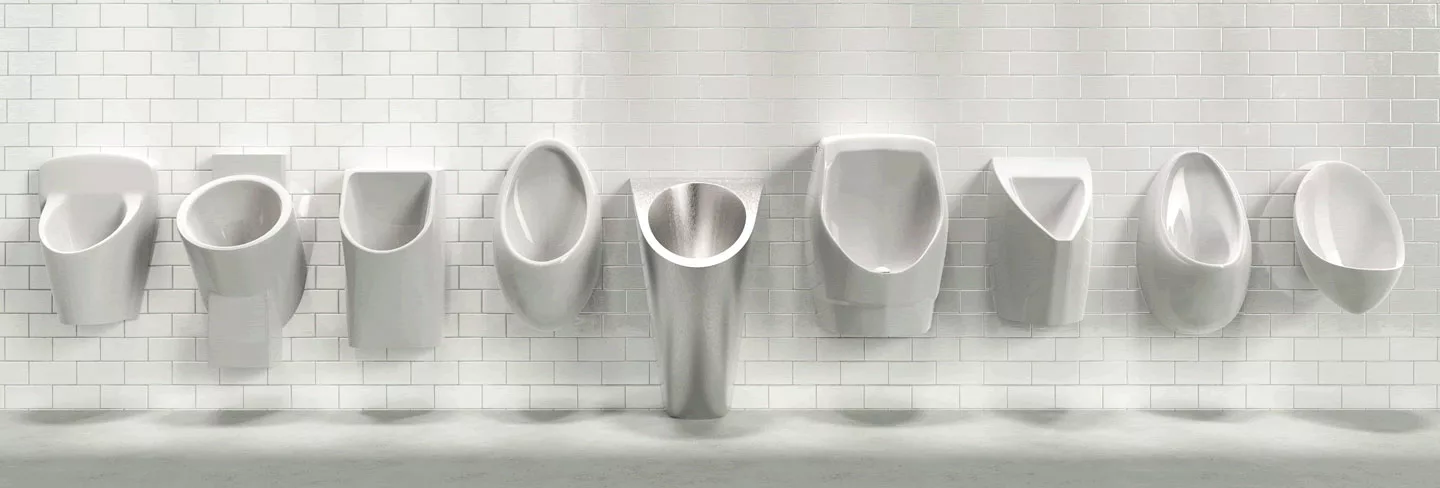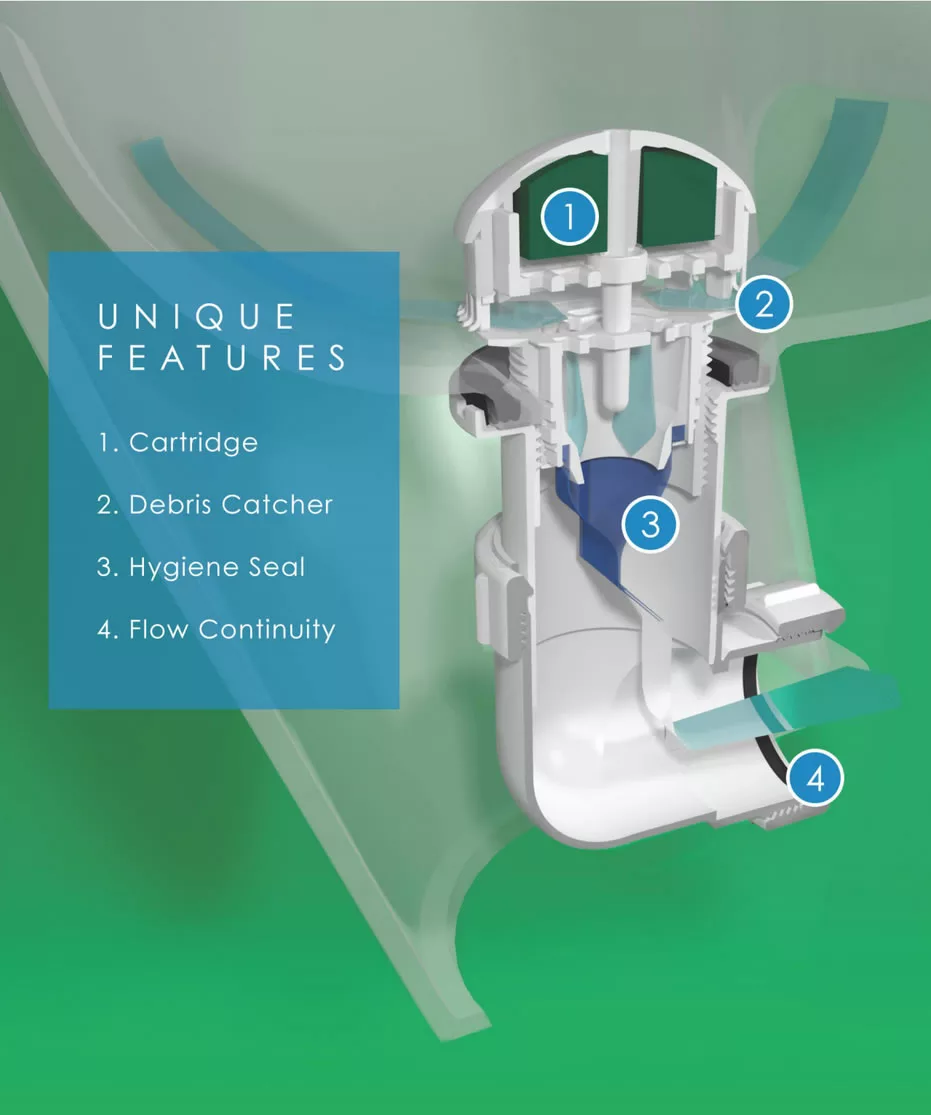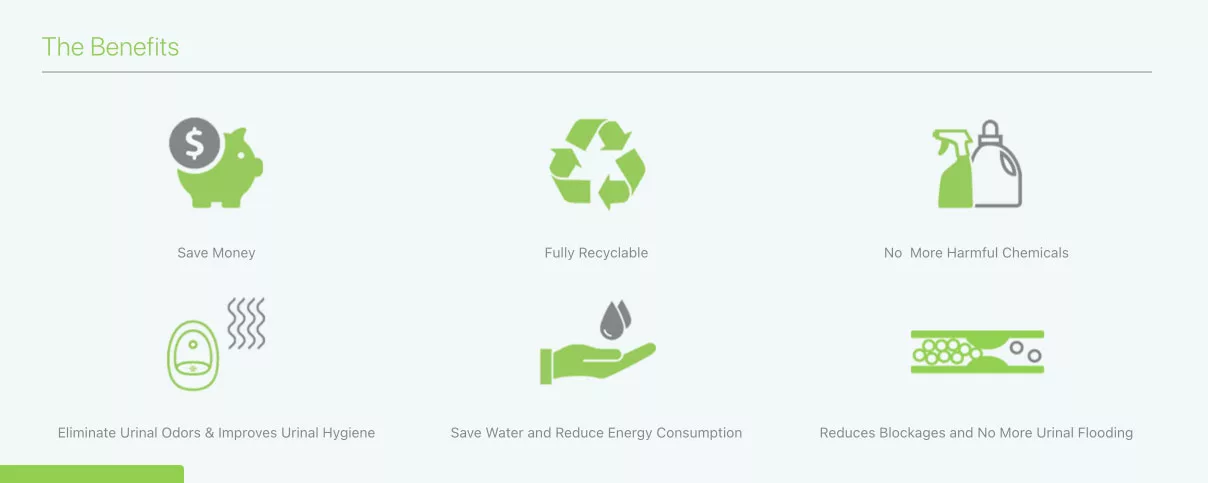Blogs
What is a Waterless Urinal?

A urinal without water might seem like a strange concept – but it offers an odourless and more hygienic experience.
Traditional Urinal versus Waterless Urinal
Waterless Urinals, which, as the name suggests, operate without water. And when you remove the flush, you naturally save huge amounts of water.
But how does this work? And is it sanitary?
More than just a water-saving solution
So how does a waterless urinal work?
In a traditional urinal, water is flushed below the bowl, with a strainer in place that is designed to catch debris. Over time, this water causes lime-scale to form, which acts as a breeding ground for bad bacteria. More aggressive cleaning is then needed, with harsher, environmentally damaging cleaning products.
Lime-scale can also lead to blockages, a risk of overflow, increased repair costs, and contributes to an overall negative user experience.
But a waterless (also known as water-saving) urinal eradicates all of these issues. Systems such as VERTECO’s Waterless Urinal System offer a hygienic solution through the use of a patented seal and Waterless Urinal Cartridge. Unlike other waterless systems that use a messy gel, the seal acts as a barrier that allows urine to flow down – but stops odours coming up.

The solution
A waterless (also known as water-saving) Urinal eradicates all of these issues. Systems such as VERTECO’s Waterless Urinal System offer a hygienic solution through the use of a patented seal and bio-cartridge . Unlike other waterless systems that use a messy gel, the seal acts as a barrier that allows urine to flow down – but stops odours coming up.
Is this kind of system hygienic?
Yes – as long as daily cleaning schedules are maintained, waterless systems are cleaner and more hygienic than traditional flush systems in every way. And they smell a lot better too! Urine actually smells worse when it comes into contact with water and air – if you remove the water, and the bowl is able to dry quicker, no smell is left behind.
The fact that the bowl is dry also means there are no damp, moist places for bacteria and viruses to breed and spread. And because waterless urinals have no flush, they are completely contactless, meaning a further reduction in the risk of spreading bad germs.
What’s so special about the waterless Urinal Cartridge
Our efficient water saving urinal Cartridge is the result of 15 years’ of research, field trials and continuous product development.
By letting air into the system, the cartridge allows the urinal to self-ventilate, while the purpose-made mesh catches any debris and prevents blockages. Unpleasant surface odours are combated by the biological block of ‘friendly’ microbes, and this also helps tackle scale, sludge and uric acid.
Finally, the Waterless Urinal Cartridge is totally eco-friendly. Classified as ‘non-hazardous’ under COSHH Risk Assessments, each component is able to work successfully without harming the surrounding eco-system.

Are Waterless Urinals Expensive?
The cost and environmental efficiencies on offer, together with a huge boost to the end-user experience, make the business case for installing, or switching to, a waterless system a compelling one. In fact, when implemented, installed, and maintained properly – they don’t cost organisations anything!
Latest Posts
Elevating Hospital Hygiene and Safety Standards with Data-Driven Cleaning
Within hospitals, patient safety and infection control are non-negotiable.
World Earth Day: Advancing Water Sustainability with Smart Washroom Sensors
April 22 marks Earth Day, a global event dedicated to environmental protection and sustainability.
Why the Smart Washroom market is set for explosive growth in 2025
Smart washroom technologies have revolutionized the public restroom experience.
Revolutionising the passenger experience: How smart washroom technology transforms airport operations
From real-time hygiene monitoring to water conservation, IoT-driven washroomsare transforming passenger experiences and operational efficiency
Smart Washrooms in Airports
Modern airports are busy spaces. With millions of passengers transiting daily, efficiency and cleanliness are more than conveniences – they are necessities.
